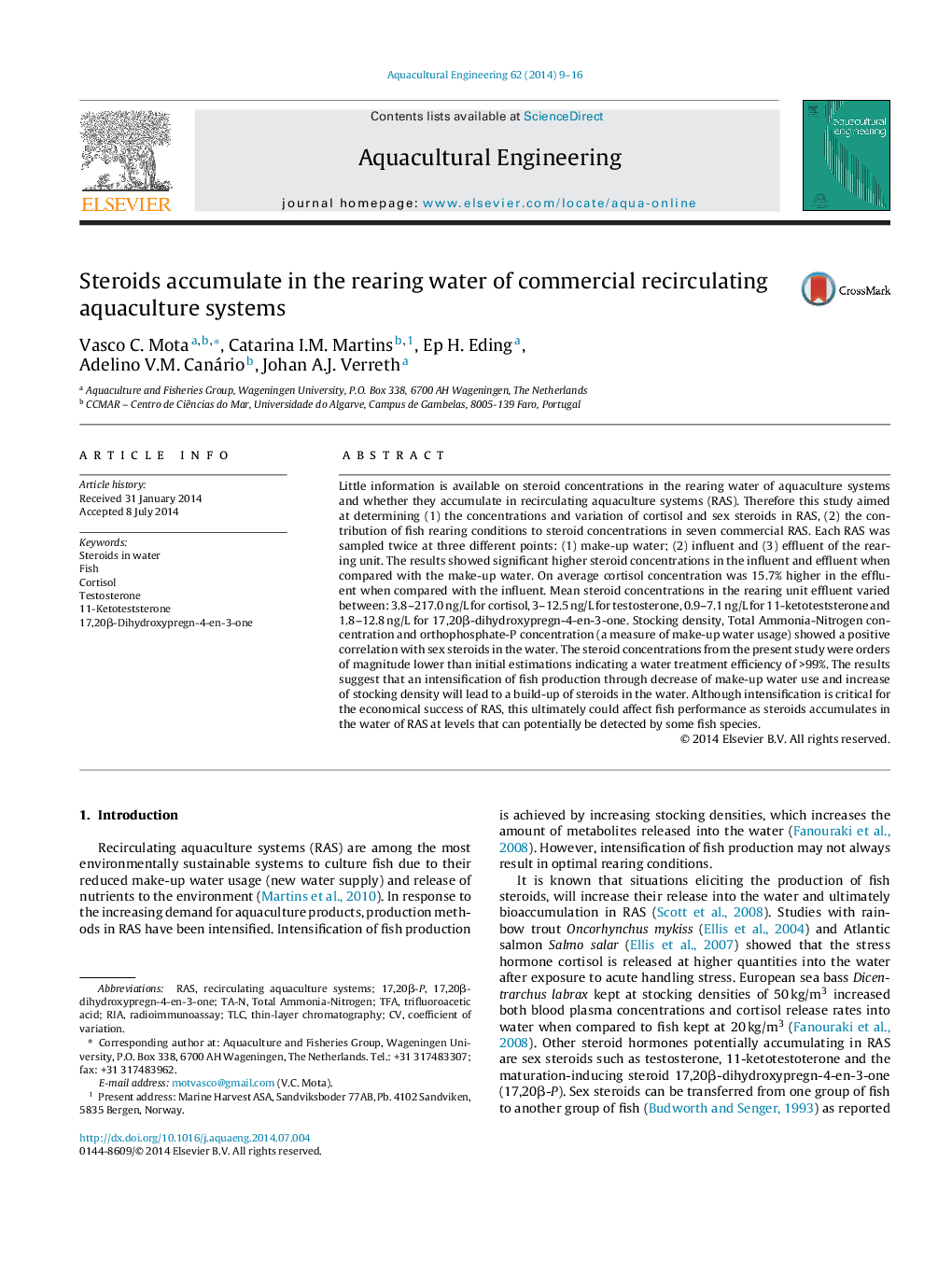| Article ID | Journal | Published Year | Pages | File Type |
|---|---|---|---|---|
| 6381336 | Aquacultural Engineering | 2014 | 8 Pages |
Abstract
Little information is available on steroid concentrations in the rearing water of aquaculture systems and whether they accumulate in recirculating aquaculture systems (RAS). Therefore this study aimed at determining (1) the concentrations and variation of cortisol and sex steroids in RAS, (2) the contribution of fish rearing conditions to steroid concentrations in seven commercial RAS. Each RAS was sampled twice at three different points: (1) make-up water; (2) influent and (3) effluent of the rearing unit. The results showed significant higher steroid concentrations in the influent and effluent when compared with the make-up water. On average cortisol concentration was 15.7% higher in the effluent when compared with the influent. Mean steroid concentrations in the rearing unit effluent varied between: 3.8-217.0 ng/L for cortisol, 3-12.5 ng/L for testosterone, 0.9-7.1 ng/L for 11-ketoteststerone and 1.8-12.8 ng/L for 17,20β-dihydroxypregn-4-en-3-one. Stocking density, Total Ammonia-Nitrogen concentration and orthophosphate-P concentration (a measure of make-up water usage) showed a positive correlation with sex steroids in the water. The steroid concentrations from the present study were orders of magnitude lower than initial estimations indicating a water treatment efficiency of >99%. The results suggest that an intensification of fish production through decrease of make-up water use and increase of stocking density will lead to a build-up of steroids in the water. Although intensification is critical for the economical success of RAS, this ultimately could affect fish performance as steroids accumulates in the water of RAS at levels that can potentially be detected by some fish species.
Keywords
Related Topics
Life Sciences
Agricultural and Biological Sciences
Aquatic Science
Authors
Vasco C. Mota, Catarina I.M. Martins, Ep H. Eding, Adelino V.M. Canário, Johan A.J. Verreth,
